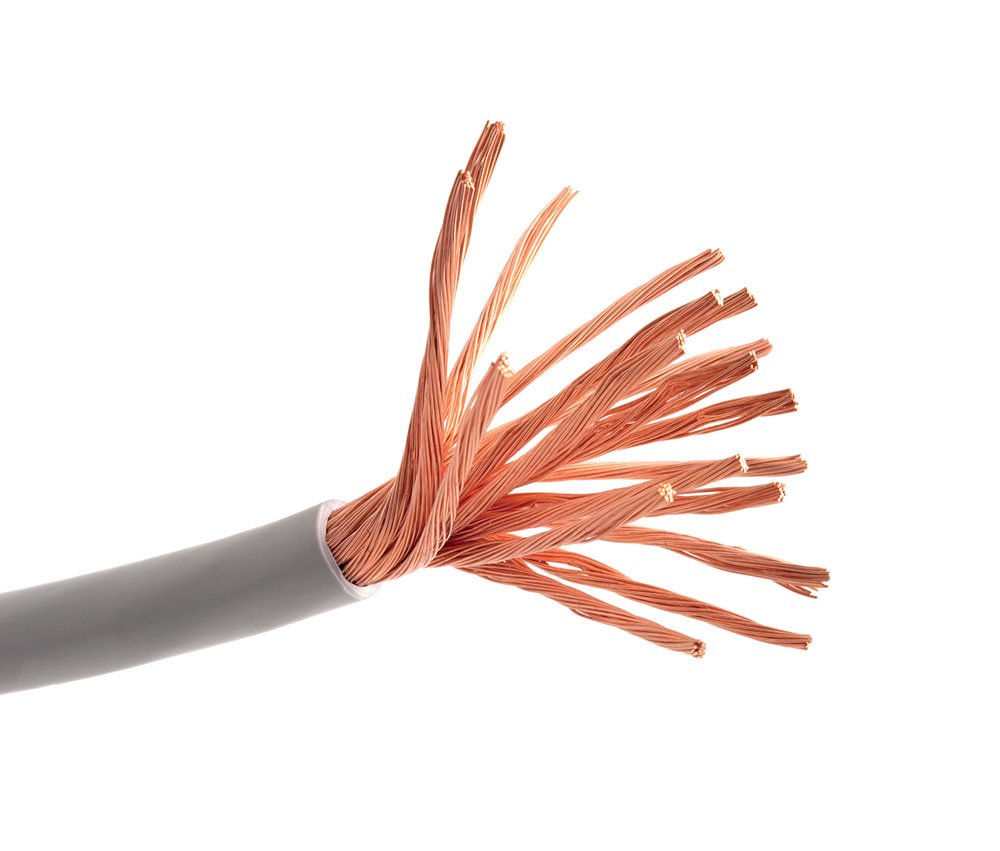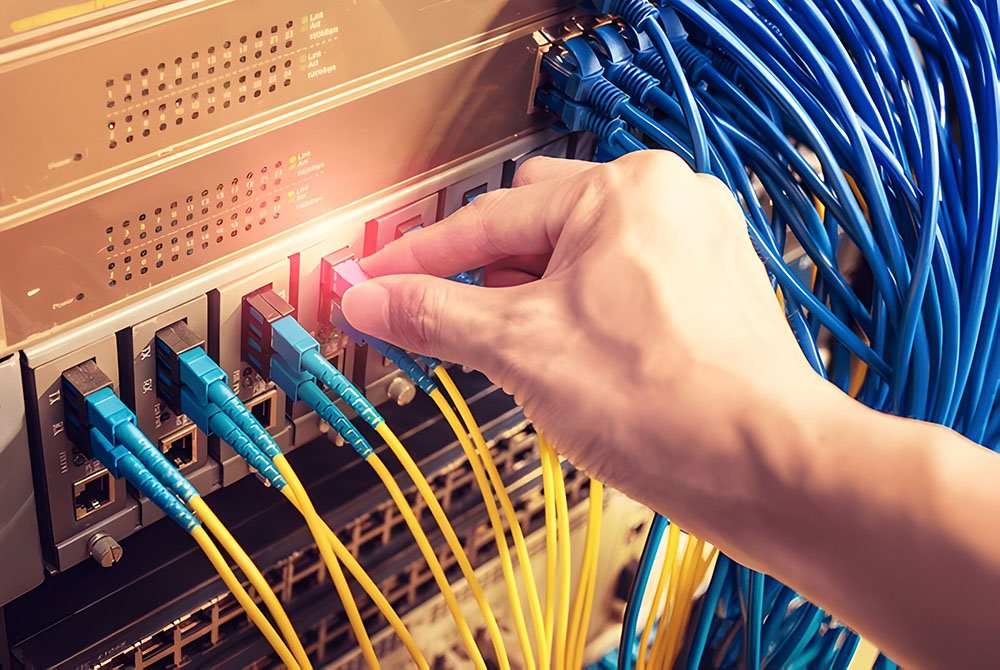Have you ever wondered what makes your internet so fast—or why it sometimes lags? The answer often lies in the type of cable delivering your connection: optical fibre over copper cable. Fiber optic cables use light to transmit data, while copper cables use electrical signals, and each has its strengths and weaknesses. In this beginner-friendly guide, we’ll dive deep into the advantages and disadvantages of optical fibre over copper cable, exploring speed, reliability, cost, and more. We’ll keep it simple and engaging, so you can see why fiber optic benefits are transforming connectivity. Let’s get started on understanding fiber optic technology and how it stacks up against copper!
Advantages of Optical Fibre Over Copper Cable
Higher Speed and Bandwidth
Lightning-Fast Data Transmission
One of the biggest advantages of optical fibre over copper cable is speed. Fiber optic cables can deliver 10 Gbps over 20 km—e.g., with just 0.2 dB/km loss—compared to copper’s 1 Gbps over 100m—e.g., 10 dB loss. This makes optical fibre over copper cable ideal for high-speed internet—e.g., 4K streaming on 5 devices with no buffering—showcasing fiber optic benefits.
Massive Bandwidth Capacity
Fiber optic technology offers massive bandwidth—e.g., 100 Tbps capacity in a single fiber—supporting multiple users—e.g., 1 million users per cable—while copper struggles—e.g., 10 Gbps shared among 100 users—e.g., 20% speed drop during peak hours. This bandwidth advantage makes optical fibre over copper cable perfect for data-heavy applications like cloud computing—e.g., 100 TB daily traffic.

Greater Distance and Signal Strength
Long-Distance Transmission
Another advantage of optical fibre over copper cable is its ability to transmit data over long distances without signal loss—e.g., 0.2 dB/km loss over 20 km—while copper loses signal quickly—e.g., 10 dB/km loss, needing repeaters every 1 km—e.g., $1500 each. This makes fiber optic cables ideal for undersea cables—e.g., 10,000 km with 99.9% uptime—ensuring reliable fiber optic technology.
Minimal Signal Degradation
Optical fibre over copper cable maintains signal strength—e.g., 1 Gbps steady over 20 km—because light signals don’t degrade like electrical signals in copper—e.g., 20% signal drop over 1 km. This reliability—e.g., 99.99% uptime—makes fiber optic cables the go-to choice for long-haul networks—e.g., connecting cities or continents—highlighting fiber optic benefits.
Immunity to Electromagnetic Interference
No Interference Issues
A key advantage of optical fibre over copper cable is its immunity to electromagnetic interference (EMI). Fiber optic cables use light—e.g., 1310 nm wavelength—so they’re unaffected by EMI—e.g., no 20% signal loss near power lines—while copper cables suffer—e.g., 10% loss near machinery. This makes optical fibre over copper cable ideal for noisy environments like factories.
Safe in High-Risk Areas
Since fiber optic technology doesn’t conduct electricity, it’s safe in high-risk areas—e.g., hospitals near MRI machines—e.g., zero interference—unlike copper, which can disrupt equipment—e.g., 10% signal loss. This safety advantage of optical fibre over copper cable ensures reliable performance—e.g., medical diagnostics.

Lightweight and Space-Saving Design
Lighter and Thinner Cables
Optical fibre over copper cable offers a lightweight design—e.g., a 3m fiber optic cable weighs 30g vs. 100g for copper—making installation easier—e.g., 20% faster in tight spaces. This is a practical advantage of optical fibre over copper cable—e.g., 50 km of fiber weighs 1 ton vs. 3 tons for copper—reducing transport costs.
Higher Cable Density
Fiber optic cables are thinner—e.g., 125 microns vs. copper’s 1mm—allowing more cables in the same space—e.g., 100 fibers in a 10mm duct vs. 10 copper cables—saving space—e.g., 90% less duct space. This advantage of optical fibre over copper cable is crucial for data centers—e.g., 400 Gbps in less space—optimizing infrastructure.
Durability and Longevity
Resistance to Environmental Factors
Optical fibre over copper cable is more durable—e.g., fiber optic cables resist moisture—e.g., with water-blocking gel—and corrosion—e.g., 25-year lifespan—while copper corrodes—e.g., 20% signal loss after 5 years in humid conditions. This durability is a key advantage of optical fibre over copper cable—e.g., 99.9% uptime in harsh climates—ensuring long-term reliability.
Longer Lifespan
Fiber optic technology lasts longer—e.g., 25 years vs. copper’s 10 years—reducing replacement costs—e.g., $5000/km savings over 20 years. This longevity makes optical fibre over copper cable a future-proof choice—e.g., supporting 60% global fiber demand by 2030 (Statista)—delivering fiber optic benefits—e.g., 0.4 dB loss over 20 km.
Disadvantages of Optical Fibre Over Copper Cable
Higher Initial Installation Costs
Expensive Materials and Equipment
A major disadvantage of optical fibre over copper cable is the higher initial cost. Fiber optic cables use costly materials—e.g., $10/kg for 99.999% pure silica—vs. copper’s $5/kg—e.g., $0.50/m for fiber vs. $0.30/m for copper. Equipment like optical transceivers—e.g., $100 each—adds to the cost—e.g., $1.3 million for 5000 homes—making optical fibre over copper cable pricier upfront.
Skilled Labor Requirements
Installing fiber optic technology requires skilled labor—e.g., $5000/km for fiber vs. $3000/km for copper—due to the need for precision—e.g., 0.1 dB loss at splices. This disadvantage of optical fibre over copper cable increases costs—e.g., 20% higher labor expenses—making copper more affordable for small projects—e.g., $150/home vs. $260/home—CommMesh offers cost-effective solutions.

Fragility and Installation Challenges
Delicate Fiber Optic Strands
Optical fibre over copper cable can be fragile—e.g., fiber optic cables are made of glass—e.g., 125 microns thick—and can break if mishandled—e.g., 0.5 dB loss from micro-bends—while copper is more robust—e.g., 1mm thick, bendable. This fragility is a disadvantage of optical fibre over copper cable—e.g., 10% higher risk during installation—requiring careful handling—e.g., gloves and tools.
Complex Installation Process
Installing fiber optic cables is more complex—e.g., splicing fibers requires precision—e.g., 0.1 dB loss per splice—vs. copper’s simpler crimping—e.g., 5 minutes per connection. This disadvantage of optical fibre over copper cable slows deployment—e.g., 20% longer installation time—making copper easier for quick setups—e.g., 100m in 1 day vs. 2 days for fiber.
Limited Availability in Some Areas
Slower Deployment in Rural Regions
A disadvantage of optical fibre over copper cable is limited availability—e.g., only 50% U.S. coverage for fiber by 2023 (FCC)—vs. copper’s 90% coverage—e.g., due to existing infrastructure. This makes optical fibre over copper cable less accessible in rural areas—e.g., 30% less fiber access—where copper is more common—e.g., 200 Mbps DSL.
Infrastructure Upgrade Challenges
Upgrading to fiber optic technology requires new infrastructure—e.g., $1.3 million for 5000 homes—while copper uses existing lines—e.g., $150,000 for upgrades. This disadvantage of optical fibre over copper cable delays adoption—e.g., 2-year rollout vs. 6 months for copper—limiting fiber optic benefits in some regions.
Maintenance and Repair Difficulties
Specialized Repair Skills
Repairing optical fibre over copper cable is harder—e.g., fiber optic cables need specialized tools like fusion splicers—e.g., $5000 each—and skills—e.g., 0.1 dB loss per splice—while copper repairs are simpler—e.g., $50 crimping tool. This disadvantage of optical fibre over copper cable increases downtime—e.g., 4 hours vs. 1 hour for copper—impacting reliability—e.g., 99.9% uptime.
Higher Repair Costs
The cost to repair fiber optic technology is higher—e.g., $1000/km for fiber vs. $200/km for copper—due to equipment and labor—e.g., $500/day for technicians. This disadvantage of optical fibre over copper cable makes maintenance expensive—e.g., 20% higher costs—making copper more cost-effective for repairs—e.g., $500 total vs. $2000 for fiber.

Applications Where Optical Fibre Excels Over Copper
High-Speed Internet and Telecom
Optical fibre over copper cable excels in telecom—e.g., FTTH delivers 1 Gbps to 5000 homes—e.g., 5 ms latency—while copper struggles—e.g., 200 Mbps DSL with 20% peak-hour drop. This advantage of optical fibre over copper cable ensures fiber optic benefits—e.g., 99.99% uptime—for streaming and remote work—e.g., 4K on 5 devices.
Data Centers and Cloud Computing
In data centers, fiber optic cables provide 40 Gbps over 300m—e.g., 0.1 dB loss—vs. copper’s 1 Gbps over 100m—e.g., 10 dB loss—supporting cloud computing—e.g., 100 TB daily traffic. This advantage of optical fibre over copper cable makes fiber optic technology ideal—e.g., 1 ms latency—for high-performance computing—e.g., 99.99% uptime.
Industrial and Medical Environments
Optical fibre over copper cable shines in industrial settings—e.g., 1 Gbps with no 20% signal loss near machinery—and medical environments—e.g., 1080p endoscopy imaging with zero MRI interference—due to EMI immunity—e.g., 99.9% uptime. This advantage of optical fibre over copper cable ensures reliability—e.g., 90% diagnostic accuracy—in critical applications.

Applications Where Copper Cable Still Has an Edge
Short-Distance and Low-Cost Setups
Copper excels in short distances—e.g., 1 Gbps over 100m—e.g., $0.30/m—vs. fiber’s $0.50/m—making it cost-effective for small setups—e.g., $150/home vs. $260/home. This disadvantage of optical fibre over copper cable makes copper better for local networks—e.g., 200 Mbps in small offices—where high speeds aren’t critical.
Legacy Systems and Compatibility
Copper is compatible with existing infrastructure—e.g., 90% coverage—e.g., $150,000 for upgrades—while fiber optic technology requires new setups—e.g., $1.3 million. This disadvantage of optical fibre over copper cable makes copper preferable for legacy systems—e.g., DSL modems—avoiding costly overhauls—e.g., 6-month rollout vs. 2 years for fiber.
Ease of Installation and Repair
Copper’s simpler installation—e.g., 100m in 1 day—and repairs—e.g., $200/km—vs. fiber’s complexity—e.g., 2 days and $1000/km—make it more practical for quick fixes—e.g., 1-hour downtime. This disadvantage of optical fibre over copper cable favors copper in scenarios needing fast deployment—e.g., temporary setups with 99% uptime.

Why Choose Optical Fibre Over Copper Cable for the Future?
Future-Proofing Connectivity
Optical fibre over copper cable is future-proof—e.g., 10 Gbps upgrades without new cables—e.g., $5000/km savings—vs. copper’s limits—e.g., 1 Gbps max. This advantage of optical fibre over copper cable supports growing data needs—e.g., 60% global fiber demand by 2030 (Statista)—ensuring fiber optic benefits—e.g., 100 TB traffic.
Supporting Emerging Technologies
Fiber optic technology supports 5G—e.g., 10 Gbps backhaul—and IoT—e.g., 1 million devices per km²—while copper can’t keep up—e.g., 500 Mbps limits. This advantage of optical fibre over copper cable makes it essential for smart cities—e.g., 99.99% uptime—driving innovation—e.g., 20% fewer accidents with traffic systems.
Long-Term Cost Efficiency
Despite higher upfront costs, optical fibre over copper cable saves money long-term—e.g., $1000/km maintenance vs. $10,000/km for copper—recouping $1.3 million in 5 years. This advantage of optical fibre over copper cable—e.g., 25-year lifespan—makes fiber optic cables a smart investment—e.g., $5000/km savings on upgrades.
Conclusion: Weighing Optical Fibre Over Copper Cable
Choosing optical fibre over copper cable is like picking a high-speed train over a horse-drawn carriage—it depends on your needs. We’ve explored the advantages and disadvantages of optical fibre over copper cable—from speed and reliability to cost and installation—showing why fiber optic technology is often the better choice. With fiber optic benefits like 10 Gbps speeds and 99.99% uptime fiber optic cables are shaping the future of connectivity. Whether you’re streaming, working, or building a smart city, understanding this comparison helps you make the right choice—embrace the technology that fits your world!

